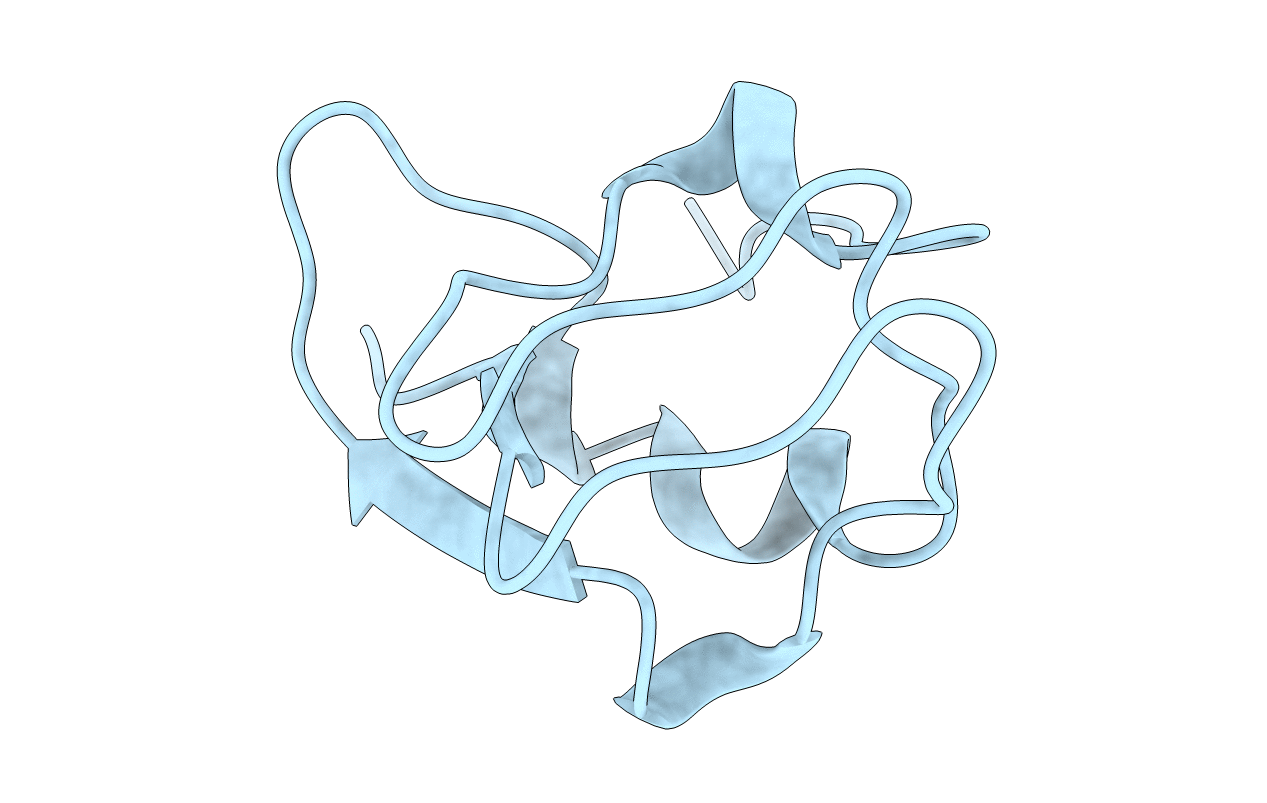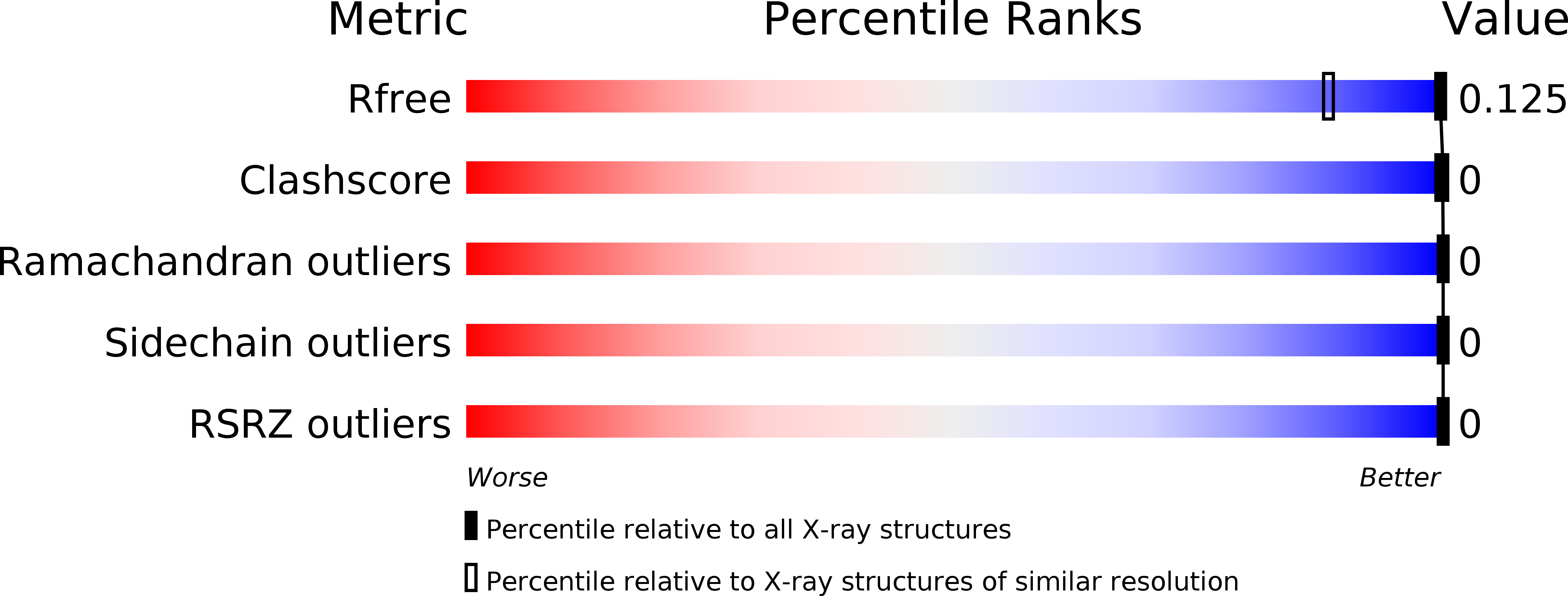
Deposition Date
2017-06-07
Release Date
2018-05-16
Last Version Date
2023-11-22
Entry Detail
PDB ID:
5XR0
Keywords:
Title:
Crystal structure of Notched-fin eelpout type III antifreeze protein A20T mutant (NFE6, AFP), P21 form
Biological Source:
Source Organism:
Zoarces elongatus (Taxon ID: 291231)
Host Organism:
Method Details:
Experimental Method:
Resolution:
0.98 Å
R-Value Free:
0.12
R-Value Work:
0.10
R-Value Observed:
0.11
Space Group:
P 1 21 1


